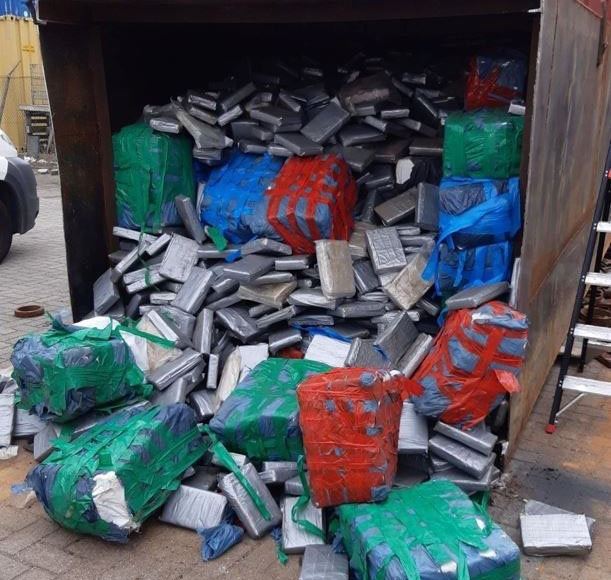As part of the investigation of the discovery of 11.5 tonnes of cocaine in a container of scrap metal that was shipped to Belgium more than a month ago, ranks of the Customs Anti-Narcotic Unit (CANU) are sorting over 50,000 images which were retrieved after they were deleted from a Guyana Revenue Authority (GRA) scanner database.
Minister of Home Affairs Robeson Benn yesterday told reporters that while the process is ongoing, details about who removed the images during the scanning process have already been established.
“I think there is some difficulty because over 50,000 images were provided to the CANU. They are trying nevertheless to examine them. But for sure it is known who removed the images, the dates and the times,” Benn said, while adding that the perpetrator is the subject of investigations which are being carried out by both CANU and the GRA.
He further noted that both local and overseas authorities are continuing their investigation.
“The Belgians are proceeding with their investigations… Some examination were recently made in other parts of the country with respect of trafficking routes, that’s where we are at the moment,” he said.
Sources had previously told Stabroek News that the scanned images were either deleted or altered.
However, after international help was sought, authorities were able to retrieve the deleted images.
Stabroek News was previously informed that GRA submitted a folder which contains thousands of images which were retrieved.
CANU is now tasked with trying to match the images with the shipment in question.
Early last month, law enforcement officials in Belgium announced that they were probing the discovery of 11.5 tonnes of cocaine in the container of scrap metal shipped from Guyana.
The shipment, which has been described as “the largest overseas drug bust ever, worldwide,” was seized upon its arrival at the Port of Antwerp. It carries an estimated street value of 900 million Euros.
The Brussels Times had reported counter-narcotics prosecutors as saying that they tracked the transatlantic journey of the cocaine from Guyana following the dismantlement of a drug trafficking gang led by a former Belgian counter-narcotics chief, which revealed the existence of tight-knit links between criminal gangs and counter-narcotics and law enforcement officials.
Stabroek News was informed that the shipment departed Guyana on September 25th and was searched by Belgian authorities on October 27th.
Since then, a number of persons, including GRA employees, were questioned in relation to the discovery and subsequently released.
Investigators believe that the suspected shipper of the container, Marlon Primo, has crucial information that can aid in the probe. But to date, Primo is yet to be located despite several searches. Both CANU and the police have since issued wanted bulletins for Primo.
Benn had told reporters that the authorities are “extremely” alarmed that the shipment passed through the surveillance system without being discovered.
He had said that the operation had to have been in the planning for months.






